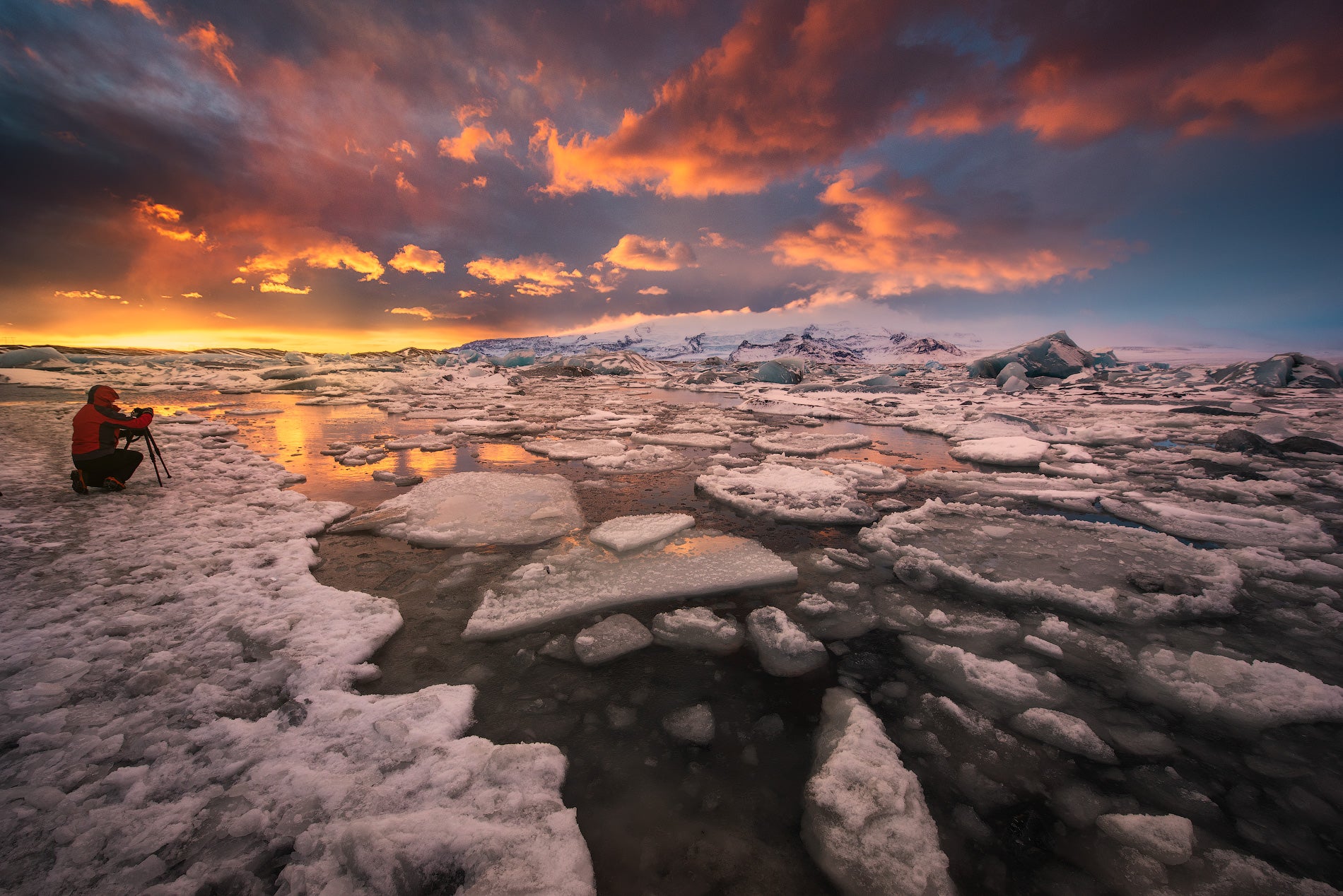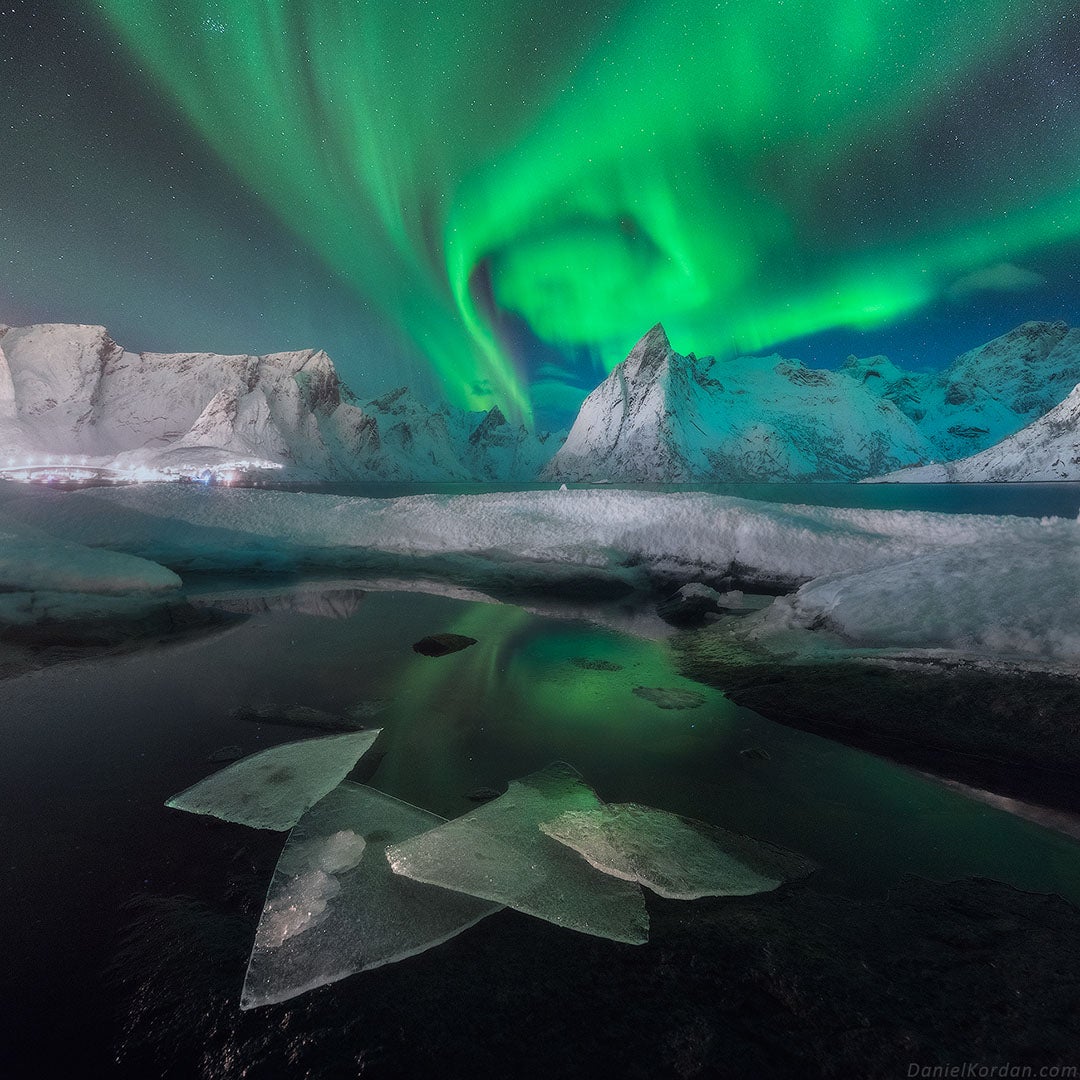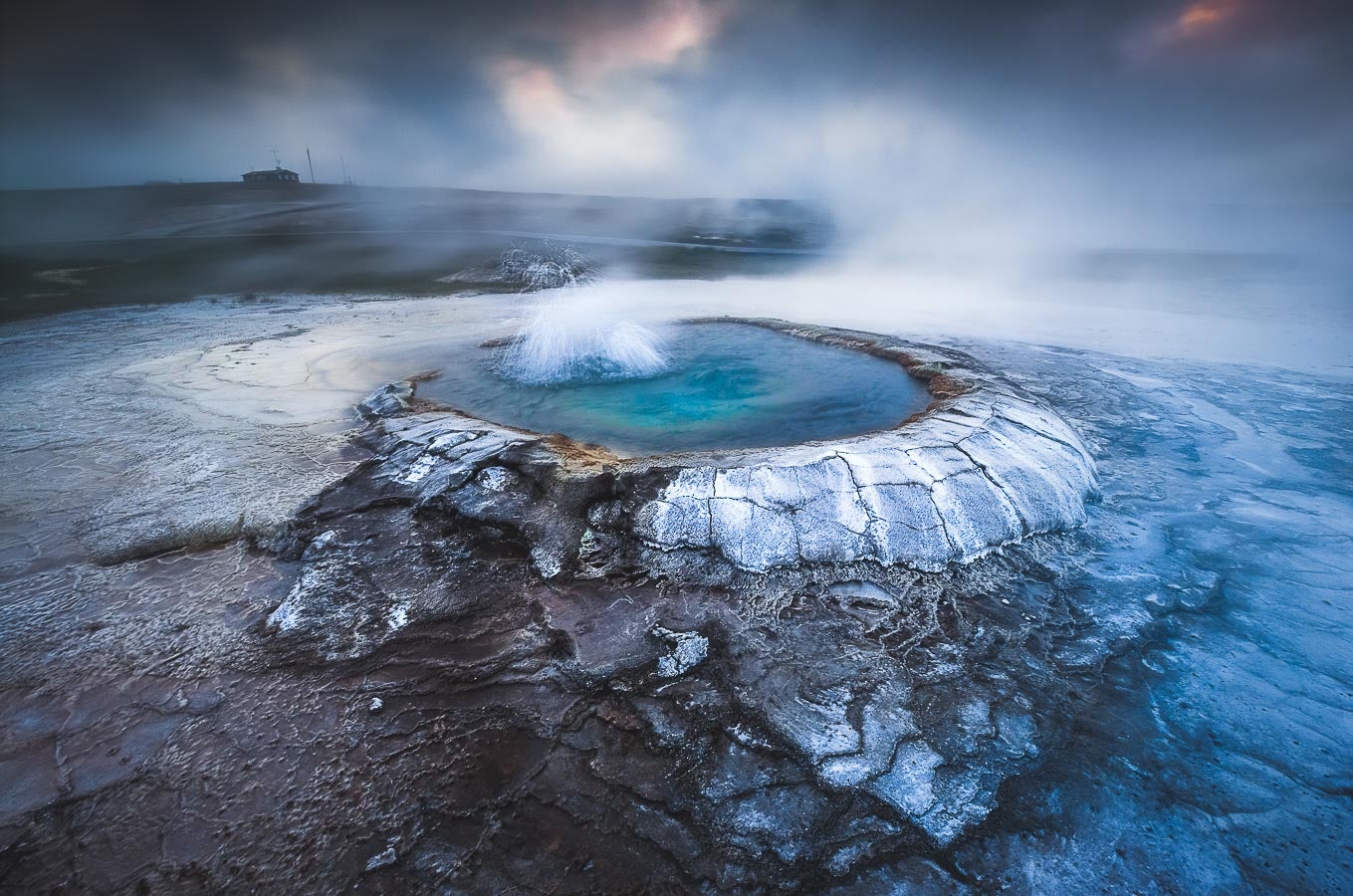
Ah, spring! No matter which hemisphere you live in, it’s that familiar time of the year when the birds are a flutter and the sound of the bees buzzes through the air. Following warmly on the heels of winter, this wonderful season heralds the return and rebirth of life. New growth flourishes and the opportunities for photography abound.
- Learn all about How to Use Complementary Colours in Photography
- Check out this 8 Day Azores Spring Photo Workshop
- Discover What to Photograph in Iceland Through the Seasons
If you’ve been shut up indoors throughout winter or need some inspiration to get out and about, then look no further; we’ve compiled a list of some delightful spring photography ideas for you to try. So dust off that camera that’s been sitting on the shelf and kick those potential allergies to the curb. It’s time to bring some sunshine into your world!
- See also: Ultimate Guide to Sunrise Photography
#13. Get Creative with Flowers and Blossoms
April showers give way for an abundance of plant life to thrive as seeds germinate and sprout. You’ll definitely know that spring is in the air when you see the flowers around you in bloom!
 Cherry blossoms in spring make a great subject for photography! Photo by: 'Pixabay'.
Cherry blossoms in spring make a great subject for photography! Photo by: 'Pixabay'.
Flowers make for great photography subjects, particularly if you have a few different varieties to choose from. Their vibrant colours are almost synonymous with springtime, so what better to do than to capture them blossoming in all their beauty?
 Get up close with flowers for more interesting shots. Photo by: 'Pixabay'.
Get up close with flowers for more interesting shots. Photo by: 'Pixabay'.
Although they may seem far too simple a subject to begin with, a flower is hardly just a flower when you are able to give it some meaning. You can focus in on a flower’s anatomy to paint a picture of its reproductive cycle. There are a lot of details to be explored, from petals to pollen, leaves and developing buds. Try isolating the various parts with a macro lens for a fascinating new perspective.
#12. Visit a Botanical Garden
If you’re not up for wandering very far then you’ll be happy to know that you can witness the changes of springtime in your very own backyard. Don’t fret though if your lawn is looking a little worse for wear. Some of us just don’t have a green thumb and that’s okay; you can always head to a botanical garden instead!
 There's a lot to see and photograph in botanical gardens. Photo by: 'Pixabay'.
There's a lot to see and photograph in botanical gardens. Photo by: 'Pixabay'.
Botanical gardens are beautiful places for photography. Not only are they home to a diverse range of plants but they usually play host to a wide variety of activities and cultural events that take place during spring. These include guided walks, lively food and music festivals, as well as more peaceful pursuits, such as people practicing tai chi.
 Rather than just relaxing beneath a tree, try photographing the scene instead! Photo by: 'Pixabay'.
Rather than just relaxing beneath a tree, try photographing the scene instead! Photo by: 'Pixabay'.
You can try your hand at capturing the atmosphere of everything that’s going on or simply use the gardens as a tranquil backdrop for your own purposes instead. Needless to say, botanical gardens make great spaces for portraits and special event photography, such as graduations, engagements and wedding shoots!
 Botanical gardens are great places for portrait photography. Photo by: 'Pxhere'.
Botanical gardens are great places for portrait photography. Photo by: 'Pxhere'.
- See also: Ultimate Guide to Wedding Photography
#11. Hunt for Wildlife
Aside from harbouring a variety of flora, botanical gardens are havens for local wildlife. So the next time that you head out for a picnic in spring, make sure to bring along a telephoto lens. There’s no need to lie in wait for animals with patience when you have a picnic rug to sit on, sandwiches and strawberries to enjoy in the interim. You can photograph many charming critters in botanical gardens, from butterflies to hummingbirds, squirrels, reptiles and amphibians – all as you relax in relative comfort!
 There's a lot of wildlife to be seen during spring. Photo by: 'Pixabay'.
There's a lot of wildlife to be seen during spring. Photo by: 'Pixabay'.
Don’t forget that springtime is when the breeding season of most animals is in full swing. This period offers up endless opportunities to capture interesting mating behaviours on camera, especially if you have the time to get out and explore in the heart of the wilderness. Try taking a road trip to a nearby national park or going camping for a few days. This way, you’ll have a chance to observe the wildlife up close in their natural habitat, especially when they’re at their most active during the beginning of the day.
 Get out and about to make the most of capturing wildlife in spring! Photo by: 'Pixabay'.
Get out and about to make the most of capturing wildlife in spring! Photo by: 'Pixabay'.
#10. Get Up for Sunrise
This brings us to our next bright idea, which is to get up and shoot at sunrise. When it comes to wildlife photography, there is no better time for it than a crisp morning in spring. You’ll feel the energy beginning to stir just before dawn, when birds break the silence in unison with their choruses of songs. Seize the opportunity to head out for a walk with your camera before breakfast so you can make the most of the early morning light.
 Sunrise is when birds are at their most active. Photo by: 'Pixabay'.
Sunrise is when birds are at their most active. Photo by: 'Pixabay'.
You might be able to capture the first rays of sunshine breaking through the trees, or even the warm glow of golden hour lighting up fronds of verdant green foliage. There are few things more inspiring than photographing a sunrise to pave the way for a wonderful start to the day!
 Forests are very beautiful in the early hours of the morning. Photo by: 'Pixabay'.
Forests are very beautiful in the early hours of the morning. Photo by: 'Pixabay'.
- See also: Ultimate Guide to Sunset Photography
#9. Chase the Fog
Speaking of early rises, spring mornings are one of the best times to photograph fog. Fog occurs when there is a lot of humidity in the air that coincides with a significant drop in temperature below the dew point overnight. When this happens, you’ll see fog around bodies of water such as lakes, near mountains and even in valleys or marshlands.
 Foggy conditions are prevalent during spring. Photo by: 'Pexels'.
Foggy conditions are prevalent during spring. Photo by: 'Pexels'.
Foggy conditions make for enchanting springtime photography. They can enhance your shots by changing the overall atmosphere of the scene.
You can use fog to create moody images of people, landscapes and even architecture. Take Hong Kong for example, where it is commonplace for layers of fog and mist to wrap around the city buildings in spring. If you travel there at the right time, then you might have the chance to photograph captivating textures and contrasts as the fog snakes around the world-famous skyline.
 Fog sweeping in over the city skyline. Photo by: 'Pxhere'.
Fog sweeping in over the city skyline. Photo by: 'Pxhere'.
#8. Dew Drops
 A ladybug perches on a leaf with dew drops. Photo by: 'Pixabay'.
A ladybug perches on a leaf with dew drops. Photo by: 'Pixabay'.
Have you ever noticed the little droplets of moisture sitting on plants, spiderwebs and other objects in the early morning? They can resemble rain drops but in actual fact, dew occurs as a matter of condensation. This phenomenon is a prevalent sight during spring. It is so intriguing for photographers that it has even spawned the development of a refreshing art form in its own right!
 It might look like rain but it's actually dew. Photo by: 'Pixabay'.
It might look like rain but it's actually dew. Photo by: 'Pixabay'.
Dew drop photography is a subcategory of macro photography. It can yield impressive images when done well. However, if capturing dew drops clinging to a single tall blade of grass is too boring for you, then try looking inside the dew drop instead. You might catch a glimpse of a whole new world… or perhaps just one that has been refracted.
 Dew drop photography is a niche that captivates many photographers. Photo by: 'Pixabay'.
Dew drop photography is a niche that captivates many photographers. Photo by: 'Pixabay'.
Dew drop refractions are quite breathtaking to witness. Capturing them involves using a bit of physics. You’ll need to place the dew drop in the foreground, where it behaves like a converging lens and inverts a subject in the background within the refraction. This can involve quite a few tries to get right so you’d best head out with your camera and start practicing!
 Dew drop refractions can be difficult to capture but well worth the effort! Photo by: 'Piqsels'.
Dew drop refractions can be difficult to capture but well worth the effort! Photo by: 'Piqsels'.
#7. Looking Through a Lens Ball
Dew drops aren’t the only way that you can capture a refraction. You can purchase props online, such as the lens ball, which will do the same thing. This way, you won’t have to monitor the weather forecast, waiting for the perfect conditions to arise. You can just make the most out of any spring day with a thought-provoking refraction!
 A lens ball is a great prop for photography in spring. Photo by: 'Piqsels'.
A lens ball is a great prop for photography in spring. Photo by: 'Piqsels'.
The lens ball bends light in such a way that it behaves like a wide angle lens. The result is somewhat like the effect that you would get with a fisheye lens, except the image that you see will be upside-down.
 Refractions appear upside down to the viewer. Photo by: 'Piqsels'.
Refractions appear upside down to the viewer. Photo by: 'Piqsels'.
Try using a lens ball to capture a unique take on your surroundings during spring. Use a wider aperture for a creamy bokeh effect and move the ball around for refractions of different subjects. You can capture wild mushrooms on the forest floor, insects mating and even springtime portraits within a refraction. The possibilities are endless!
#6. Enchanting Forests
 Forests are magical during spring. Photo by: 'Pxhere'.
Forests are magical during spring. Photo by: 'Pxhere'.
If there’s one place that warrants a visit during spring, it is definitely the forest – not just to forage for wild mushrooms either. In the woodlands, you can capture compelling images of lush greenery and carpets of wildflowers that resemble scenes straight out of a fairytale.
 Sunlight streams in through the trees in the morning. Photo by: 'Pexels'.
Sunlight streams in through the trees in the morning. Photo by: 'Pexels'.
Try photographing a forest in the early morning with a touch of fog or mist. It will reduce the contrast and help to separate the tangle of trees from your subject in the foreground. Shoot from a distance using a telephoto lens to compress the scene or focus in on small details in the undergrowth.
 Look beneath your feet. There's a lot to capture closer to the forest floor! Photo by: 'Piqsels'.
Look beneath your feet. There's a lot to capture closer to the forest floor! Photo by: 'Piqsels'.
Forests are great places to explore and provide a lot of opportunities for photography!
- See also: Germany Photo Tours and Workshops
#5. Get Up Close with Insects
If you have an irrational fear of moths, spiders or other creepy crawlies, then this idea is probably not for you. However, if you’re fascinated by insects or you’re willing to undertake some aversion therapy, then listen closely!
 Insects are very active during spring. Photo by: 'Pixabay'.
Insects are very active during spring. Photo by: 'Pixabay'.
Spring isn’t just the time when bees buzz about. There will be a lot going on in the insect world, both underfoot and all around. While insects oftentimes go unnoticed (save for the pesky mosquitoes that bite), they are actually the largest animal species on the planet. Insects possess bodies that seem alien in comparison to our own. They also exhibit a range of fascinating behaviours that make for excellent photographs.
 Try a macro image of an insect. Photo by: 'Pxhere'.
Try a macro image of an insect. Photo by: 'Pxhere'.
If you have a macro lens, try photographing insects in the environment around your home. You can also head out into nature where you’ll no doubt bump into a few insects in no time. Extreme close-ups of bugs can unwittingly reveal charming character traits such as inquisitive spider eyes and delicate butterfly wings. On the other hand, you can also capture the raw and astounding detail of a praying mantis eating its prey. Is it beautiful or gross? You decide!
#4. Babbling Brooks and Cascading Waterfalls
Oftentimes, spring arrives with a lot of rain, making it the best time to photograph running water features such as streams and waterfalls. There’s nothing better than hitting the trails for a hike out in nature and being rewarded with the gorgeous sight of a waterfall in full flow at the end!
Depending on where you live, you may or may not be near any natural waterfalls. Don’t worry though, as man-made waterfalls can be just as pretty. Winding rivers, brooks and creeks also make for wonderful photographs.
Try experimenting with a neutral density filter to slow down your shutter speed for a longer exposure. This will allow you to create a dreamy, silky effect with the water, which can elevate your images from mundane to riveting.
#3. Textures and Patterns
 Textures can be found all around you in spring. Photo by: 'Pxhere'.
Textures can be found all around you in spring. Photo by: 'Pxhere'.
Spring is the season to delve into the intricacies of what makes this world breathe. Between flowers, trees, leaves and the soil on the ground, you’ll find a myriad of textures and patterns in all shapes, colours and sizes.
 Textures make for great abstract imagery. Photo by: 'Pixabay'.
Textures make for great abstract imagery. Photo by: 'Pixabay'.
Get creative by zooming in on textures in the great outdoors to create abstract or intimate images. If you’re lucky, you might even find a pattern in nature, such as a spiral or cracks. These features are all around you and to find them, all you need to do is look. From leafy clover to smooth grains in rocks and the rough appearance of bark, natural textures and patterns can add a weird and wonderful element to your spring photography.
 Keep your eyes open for all sorts of textures in spring! Photo by: 'Pxhere'.
Keep your eyes open for all sorts of textures in spring! Photo by: 'Pxhere'.
- See also: 25 Tips for Creative Beach Photography
#2. Motion Blur
If you want to add a touch of fun to your images, then experiment with motion blur. This photography technique employs the use of panning while the shutter is open during an exposure to create a sense of movement. The result can be similar to a painting in a gallery, even when the movement is subtle. This might be all you need to add that extra layer of magic to your springtime images.
 Motion blur makes your images look like paintings. Photo by: 'Piqsels'.
Motion blur makes your images look like paintings. Photo by: 'Piqsels'.
- See also: The Orton Effect Explained
#1. Spring Harvest
 Fruits and vegetables are in abundance during spring. Photo by: 'Pxhere'.
Fruits and vegetables are in abundance during spring. Photo by: 'Pxhere'.
Last but not least, if there’s one thing to love about spring, it’s the large abundance of fruits and vegetables that come into season! Try taking your camera out with you to a farmers’ market on the weekend to capture all of the fresh produce bursting with colour. Better yet, you can head out into the country to catch brilliant golden canola fields in bloom or rolling hills of greenery and crops just waiting to be picked.
 Try going out to photograph a farmer's market or even crops before harvest. Photo by: 'Pixabay'.
Try going out to photograph a farmer's market or even crops before harvest. Photo by: 'Pixabay'.
Whether you’re into nature, portraits, spending time with your loved ones or immersing yourself in the colours that take hold during this time of the year, there is something special about spring photography for everyone. So without further ado, grab your camera and charge those batteries. The winter is over so head on out; it’s time to exercise your creativity again!
About the author: Serena Dzenis is a landscape photographer based in Iceland. You can find more of her work on her website or by following her on Facebook and Instagram.
Have you got any other spring photography ideas? Where do you like to go for photography throughout the seasons? Leave a comment below!












